One
THE EARLY YEARS
The story of Glendale begins with construction of the Arizona Canal, started in 1883 and completed in 1885, and the distribution system to move water from the canal south to the farms and ranches of landholders who were entitled to water. Twenty feeder canals, called “laterals,” spaced a mile apart across the Valley, were dug to carry water from the Arizona Canal. Before this water distribution system was constructed, the Glendale area was mostly uninhabited desert. The early success of Sahuaro Ranch and other large ranches in the Glendale area that used irrigation farming did much to bolster the claims of land speculators that the Valley could become an agricultural paradise. In 1895, however, a flood washed out the headgates of the canal, making it impossible to regulate the flow of water into the canal. It took many months to repair the damage, but before repairs were completed, a three-year drought hit the Valley starting in 1897. The unpredictable flow of water in the canal left many ranches with dying crops and orchards. Some of the earliest Brethren settlers left for greener pastures in California, but other farmers replaced them. Surmounting the difficulties of desert living, most Glendale residents remained in their growing, developing town.
By 1895, Glendale counted 300 residents in town and there was a new two-story brick grammar school for the community’s 50 pupils. The Santa Fe, Prescott, and Phoenix Railway was laying track through town parallel to Grand Avenue, the road built in 1888 to connect Northwest Valley communities to Phoenix. The Brethren, Methodist, and Catholic churches were organized, and others would follow. By the early 1900s, the town had a library, a woman’s club (the Self Culture Club), a lumber and hardware business, and several agricultural support businesses such as warehouses, a shipping depot, and a sugar-processing plant. Perhaps the largest operation in town was the sugar beet processing plant (locally known as the Sugar Beet Factory) built by the Eastern Sugar Company in 1906 at a cost of $1 million. At the time it was built, the factory was described as “the greatest single industrial enterprise” in the Valley. Many enthusiastically dubbed Glendale “Sugar City.”
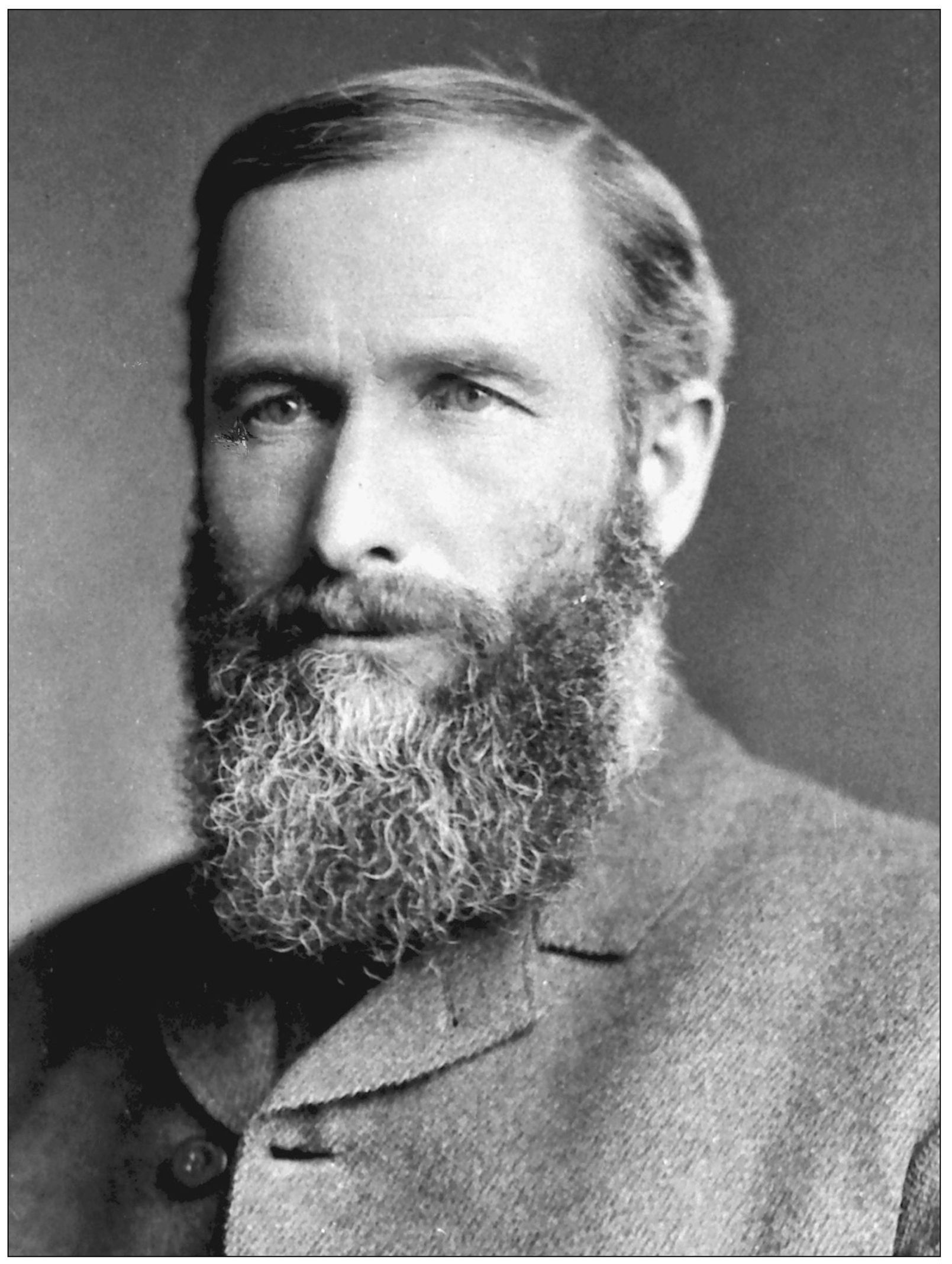
William J. Murphy undertook construction of the Arizona Canal in 1883 without knowing the extent of the formidable engineering and financing problems he would encounter. Nevertheless, in May 1885, with the job finished, he watched the first water flowing through the canal. In 1888, Murphy built Grand Avenue on a straight diagonal from Phoenix to Peoria, Arizona. It passed through the area about to become the town of Glendale and provided an important transportation link for all of the northwest Salt River Valley.

Because of the growth of weeds and tree roots in and along the Arizona Canal and its laterals, it was a never-ending job to clean the canals so water would flow freely to the irrigated fields. Crews were hired to regularly clean out the ditches and canals. Following heavy rains, repairs would be necessary. During World War II, German prisoners of war held at Papago Park in Phoenix were used to clean the laterals in Glendale and other West Valley towns.
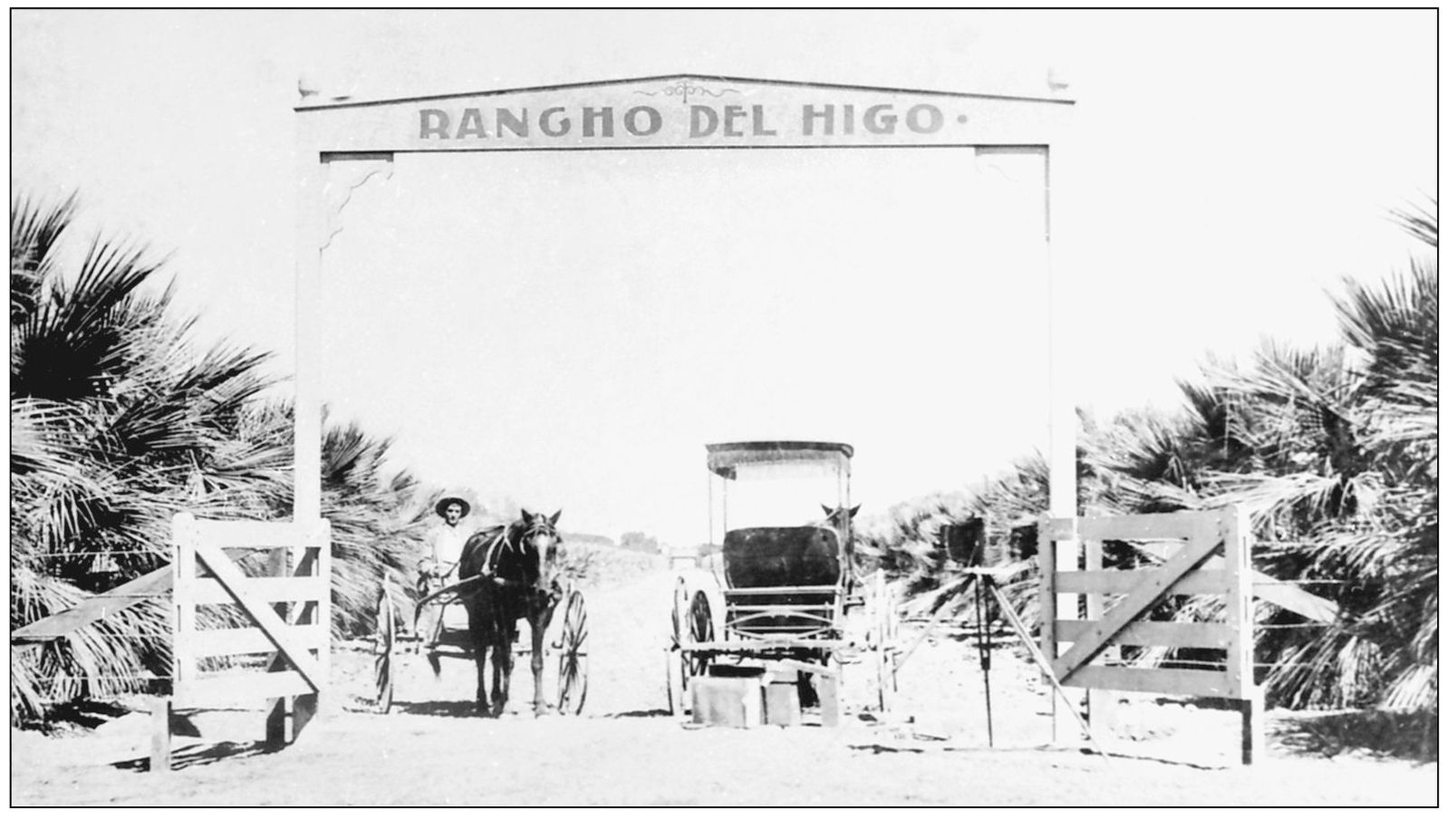
One of the earliest agricultural operations in the Glendale area was Samuel Bartlett’s 640-acre Rancho del Higo. Like his brother’s Sahuaro Ranch nearby, Sam’s Rancho del Higo was hailed as proof of the success of irrigation farming in the Salt River Valley. Although the ranch is gone, some of the palm trees that were at the entrance are still standing at Forty-seventh and Northern Avenues.
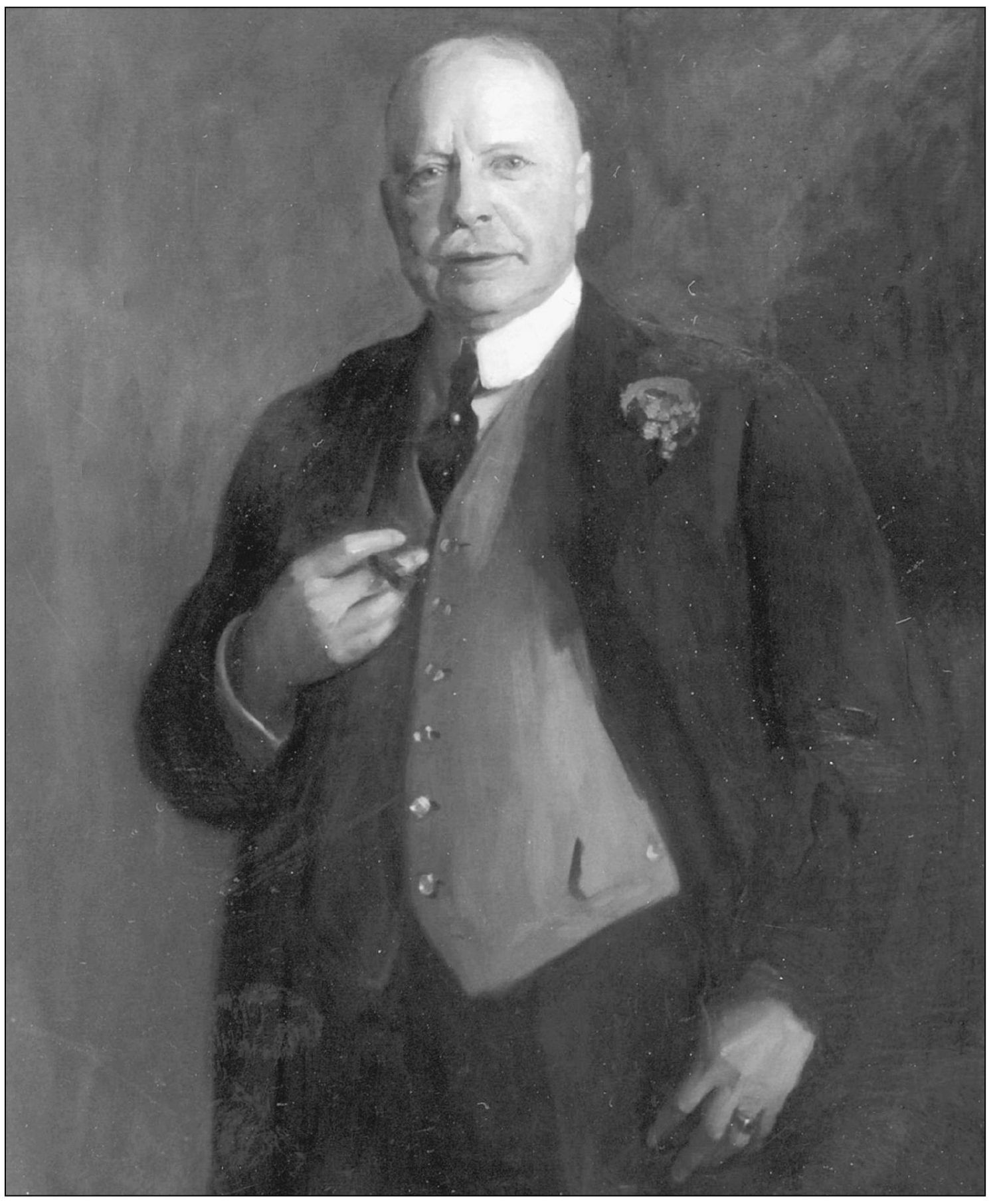
William Henry Bartlett was born in Peoria, Illinois, in 1850. He was the son of a prominent merchant and descended from a distinguished New Hampshire family. After graduating from Dartmouth College in 1871, he joined his brother Samuel’s grain commission business in Peoria and was instrumental in its growth into a large successful operation with offices in half a dozen Midwest cities. In 1875, he married Mary Wentworth Campbell, and they had three children. Bartlett’s interest in the Salt River Valley was kindled by land promoters visiting in the Midwest. In the 1880s, he acquired the section of land that he christened Sahuaro Ranch. Managing it from Illinois through a trusted foreman, Bartlett developed a substantial farming and ranching operation. In the summer of 1898, he considered moving permanently to his “rustic ranch” in Arizona. Instead he settled in northeastern New Mexico where he developed Vermeijo Park Ranch. Bartlett retired from the hustle and bustle of the commodities business in 1912. He sold Sahuaro Ranch in 1913. For the rest of his life, he devoted his time to his New Mexico ranch. He died in December 1918.
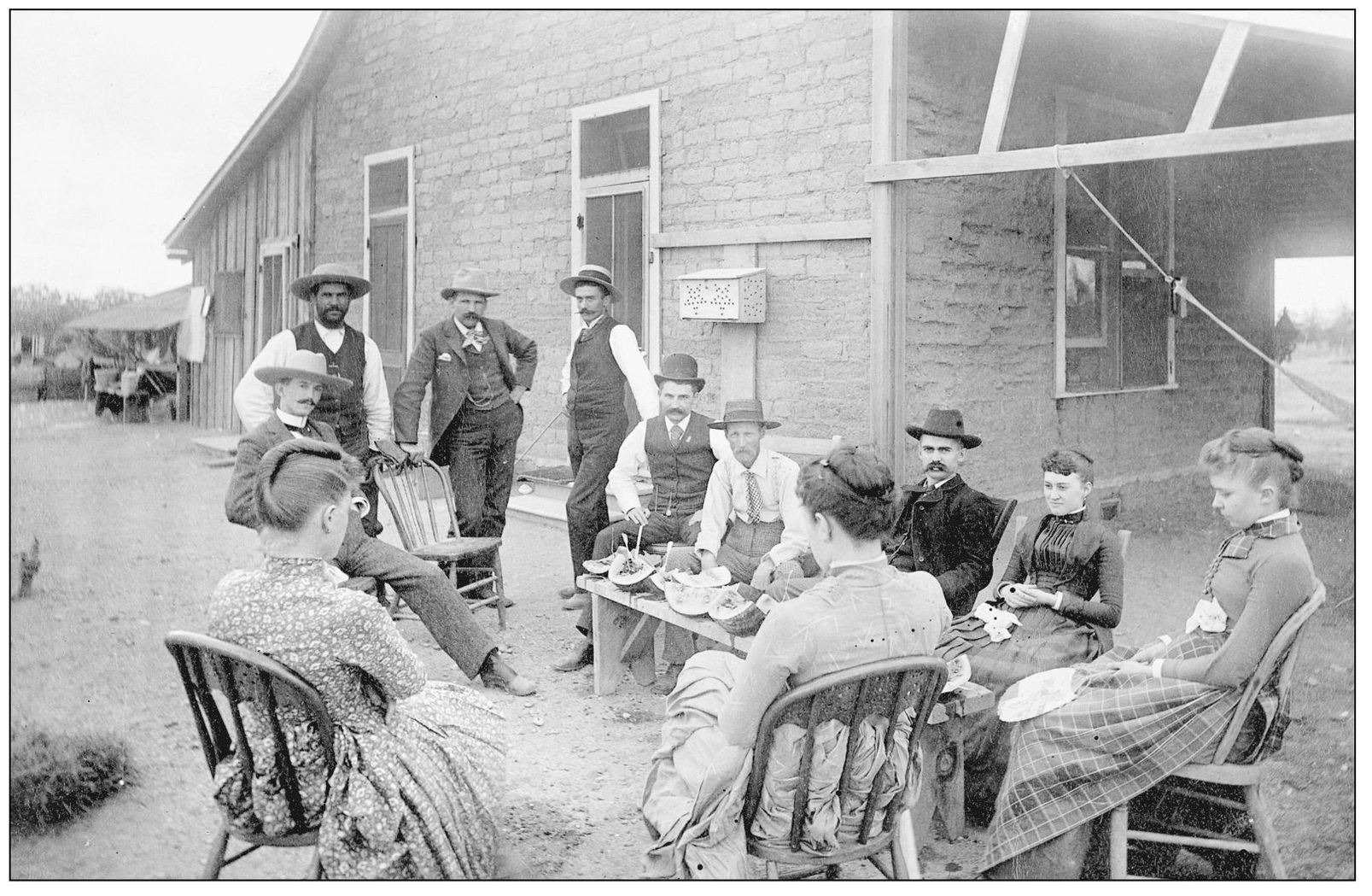
Next to the two-room adobe house at Sahuaro Ranch in the late 1880s, visitors enjoy a feast of freshly picked melons in the above image. Although the guests are unidentified, it is likely that one of the men has land for sale. Sahuaro Ranch was a prime “excursion” destination for potential land investors. William J. Murphy and other developers would show off the ranch and its bounty in hopes of making a sale to the visitors. Today restored Sahuaro Ranch retains much of its turn-of-the-century charm on the 17 acres of the original ranch that were converted into a historical area park. On the left in the image below are the 1930 garage, the 1898 bedroom addition, and the 1892–1895 main house (the adobe house is left of the garage, not pictured).

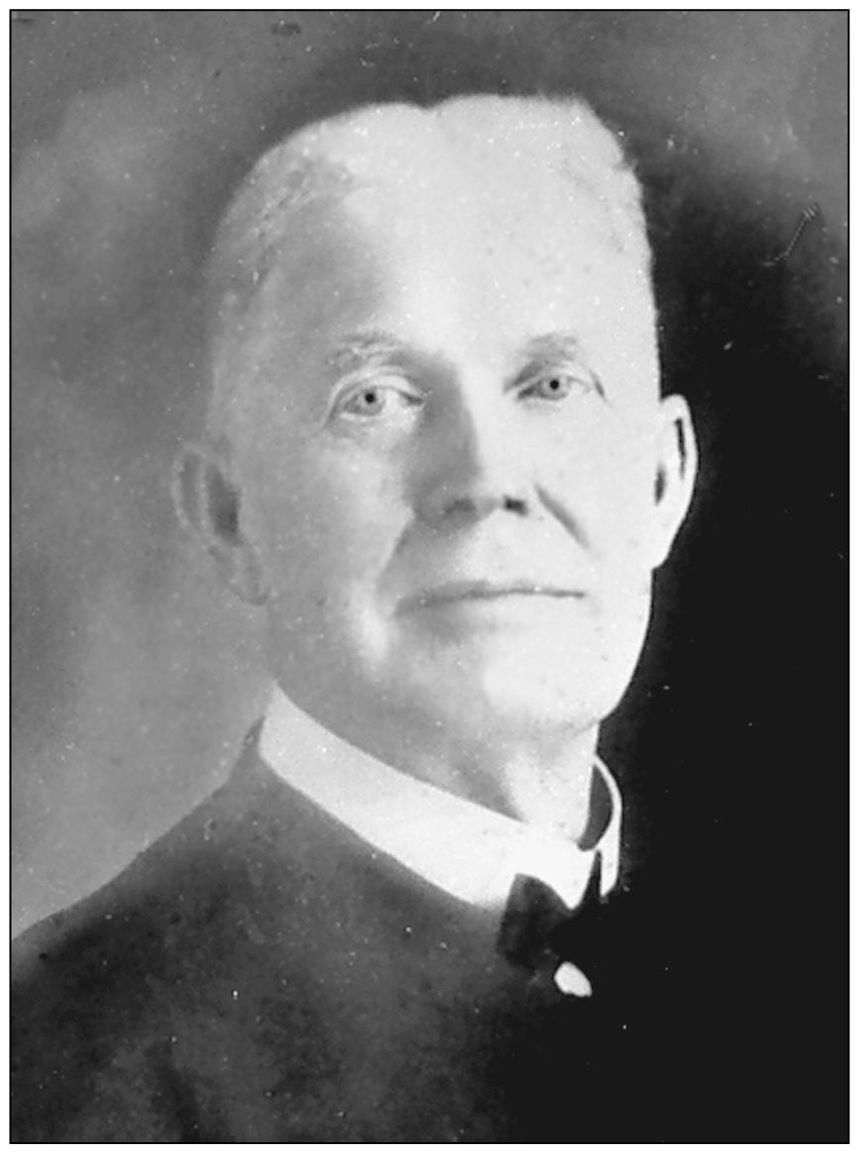
Burgess A. Hadsell was a well-known colonizer for the German Reformed Church, whose members were often referred to as Dunkards or Brethren. In the fall of 1891, Hadsell convinced some 70 families, including 33 of his relatives, to move to Arizona Territory to the virgin lands of the temperance colony of Glendale. As a result, in the spring and summer of 1892 the new community became home to many new settlers.
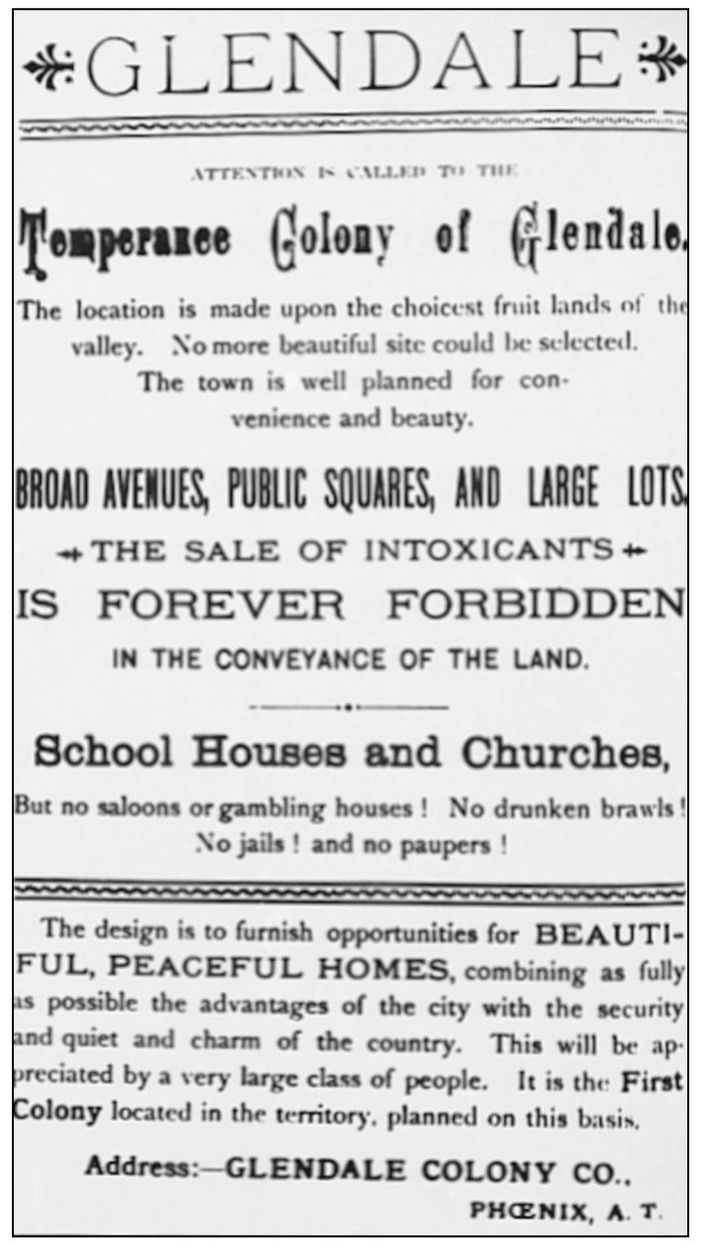
This newspaper advertisement from the Arizona Weekly Gazette in 1892 invites temperance-minded people to settle in Glendale. William J. Murphy and other investors circulated similar advertisements widely in the Midwest and East. The original plat for Glendale was registered November 2, 1892. The next year, on May 8, Burgess Hadsell registered an addition to the town site, which he called Hadsell’s Addition. As this property was sold, the deeds carried a clause prohibiting the manufacture or sale of alcohol.
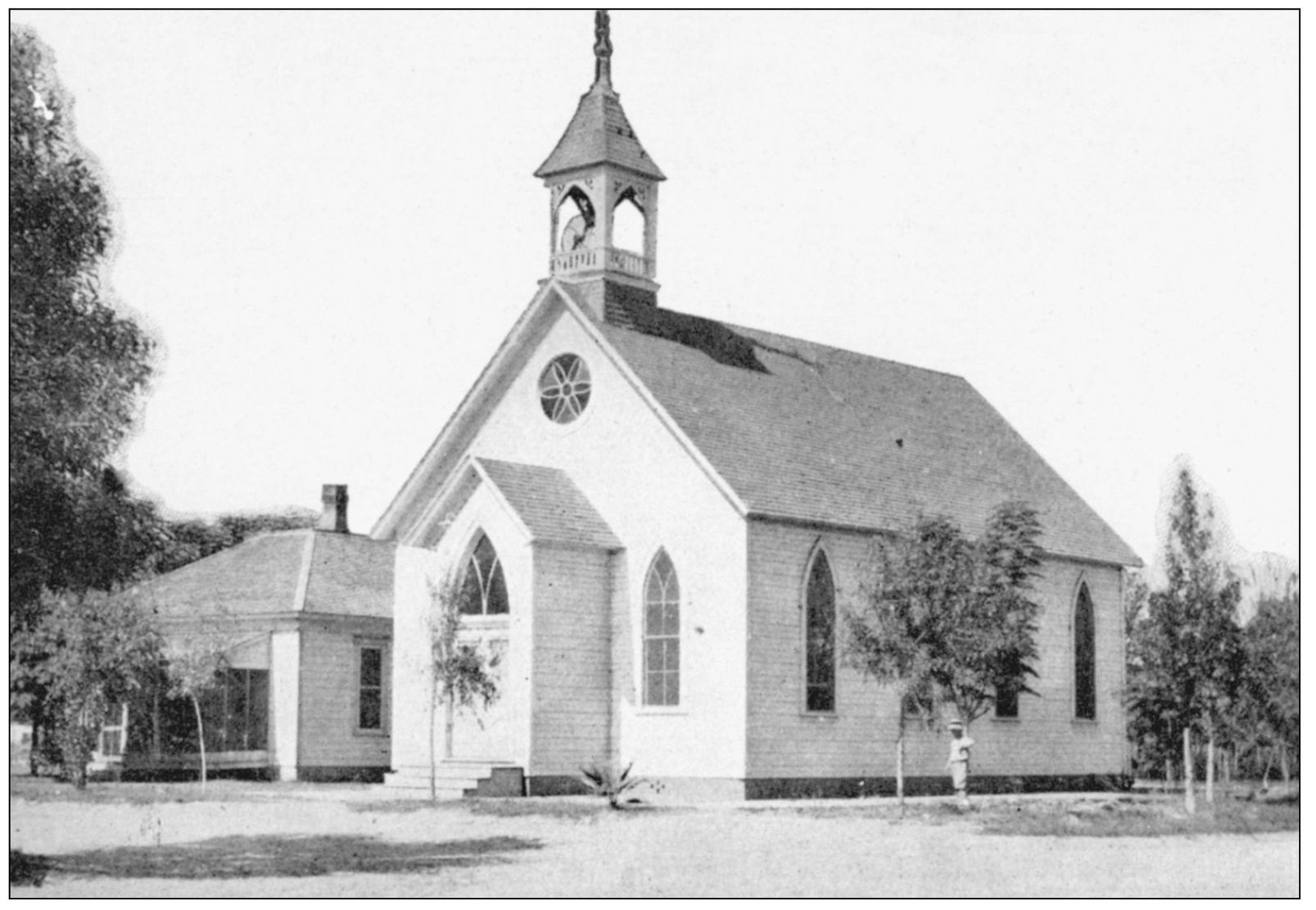
Built in 1897, the Methodist Episcopal Church (above) was used until 1920 when, anticipating building a new church, the sanctuary was sold to the Seventh-Day Adventists. In March 1920, the building was moved to another location, and the parsonage (on the left in the above image) was moved to another part of the property to make room for the new church. The cornerstone, engraved April 6, 1920, was not laid until May 4, 1923. Nevertheless, the foundation was completed by June 1920. The boy by the tree is Howard Twitty. Construction problems, materials delays, and financial woes delayed completion of the new church (below) until 1928. A formal dedication was held on February 3, 1929. When the church again needed space to expand, the parsonage was moved north to Second Avenue (Fifty-eighth Avenue), where today it is an antique shop.


This early Brethren family, the Coffelts, came to Glendale by train in 1898. In 1903, they lived in this one-room brick house located near where the Glendale Union High School athletic stadium was built in 1947. There is a screen door on the entrance and covered porches on two sides of the house, although only one porch is seen in the image. Palm frond–covered porches, as seen here, were often a part of early Glendale houses. Not only did the porches provide some shade during the day, they also served as sleeping porches at night during the hot summers. It was a common practice to move a wood-burning cooking stove outside during the hot months. The Coffelt family are, from left to right, Pearl, Mary “Mollie,” William “Bill,” Lee, James “J. H.,” and baby George. Later, three other children, Albert “Bo,” Luella, and Donna, were born to Mollie and J. H.

The Henry and Catherine Lehman home on west “C” Avenue (west Myrtle) gives a glimpse of how some people lived in early Glendale. Built before 1900, the home has gone through many changes over time, including fire, rebuilding, and remodeling, but it is still standing today. Henry Lehman was the first president of the Glendale State Bank, founded in 1909. His son, Ray Lehman, worked the family farm where he kept a small dairy herd. Belle Lehman, Ray’s wife, sold raw milk to many Glendale families until a Valley fever scare in 1940. The windmill (right) and water storage tank seen in this 1909 photograph were one source of water in the arid desert.
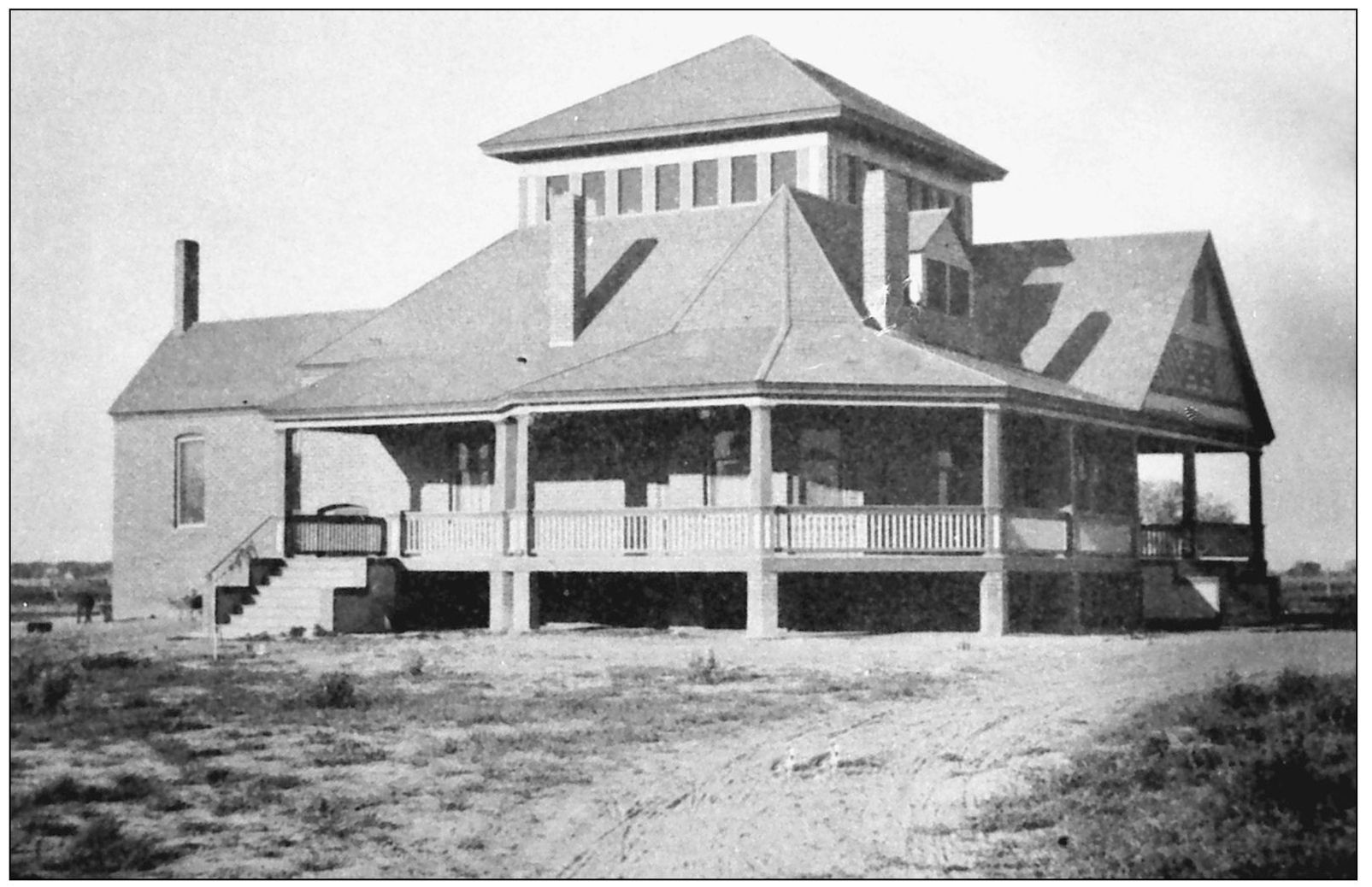
Known as the Hamilton House, this 17-room late Queen Anne–style house was built by Wisconsin lumberman Herbert W. Hamilton for his family, on 318 acres of land a mile north of downtown Glendale. Begun in August 1897, it was completed by Christmas Day, when the Hamilton family arrived in Glendale. Hamilton raised cattle in partnership with his former Wisconsin partner, Harry W. Adams. Hamilton and his wife, Ida, were socially active in the community, but for some reason they moved away. By 1903, the Hamilton’s had left Glendale and moved to Eureka, California, where Hamilton returned to the lumber business. In 1907, Louis Marshall Sands, a Michigan lumberman, purchased the home and property for $46,000 and renamed it Manistee Ranch for his hometown in Michigan. The above image depicts the ranch house as it appeared in December 1897, and the image below shows it in 1992.


Built in 1895 of locally fired brick by Glendale contractor John B. Doner, the Glendale Grammar School enrolled 50 students the first year. By 1900, this four-room schoolhouse served more than 100. This building was the pride of Glendale for several years, but the Sugar Beet Factory supplanted it in popularity after 1906.
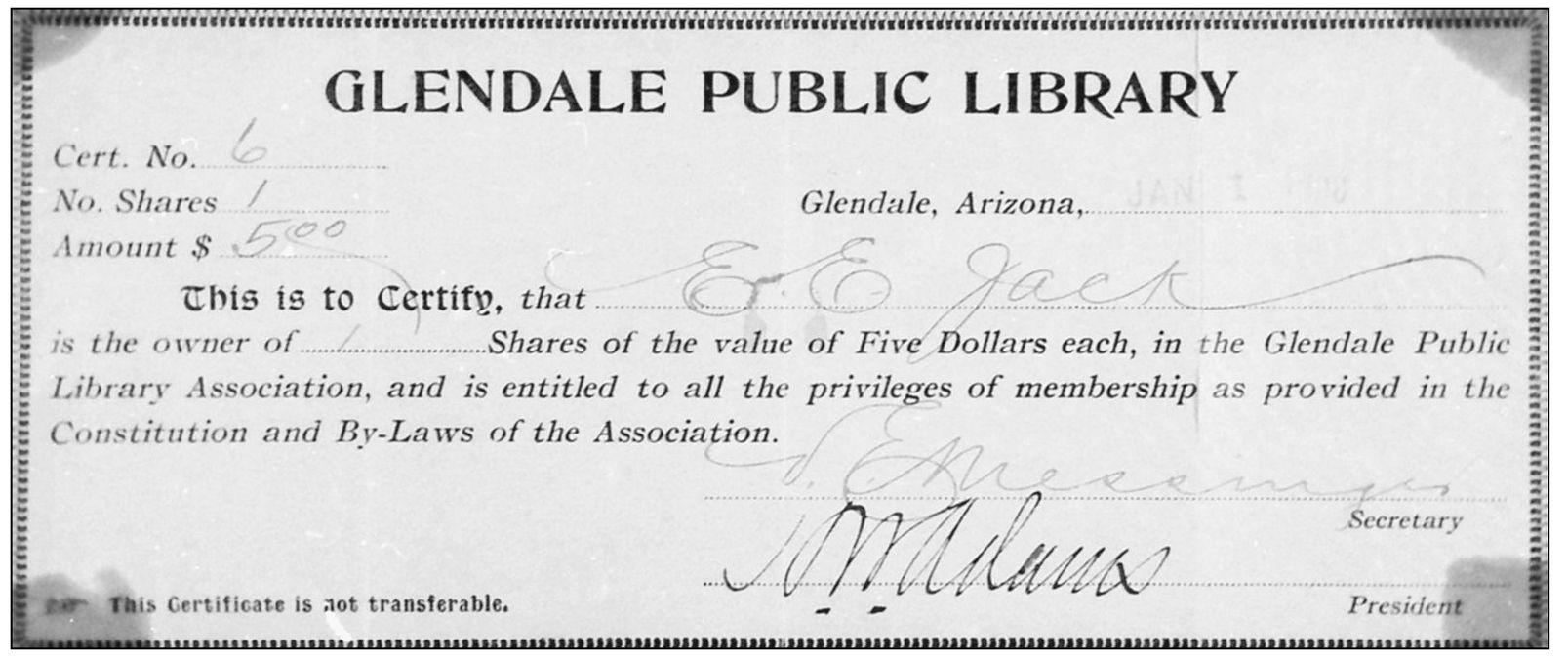
The Glendale Public Library Association was formed to help support the fledgling library started by Vic Messenger in 1897. For $5, Edgar E. Jack, superintendent of Rancho del Higo, purchased one share in the public library, as evidenced by this certificate No. 6 dated January 1, 1898. Messenger, as secretary of the association, endorsed it, as did the association president, Harry W. Adams, who was superintendent of Sahuaro Ranch.
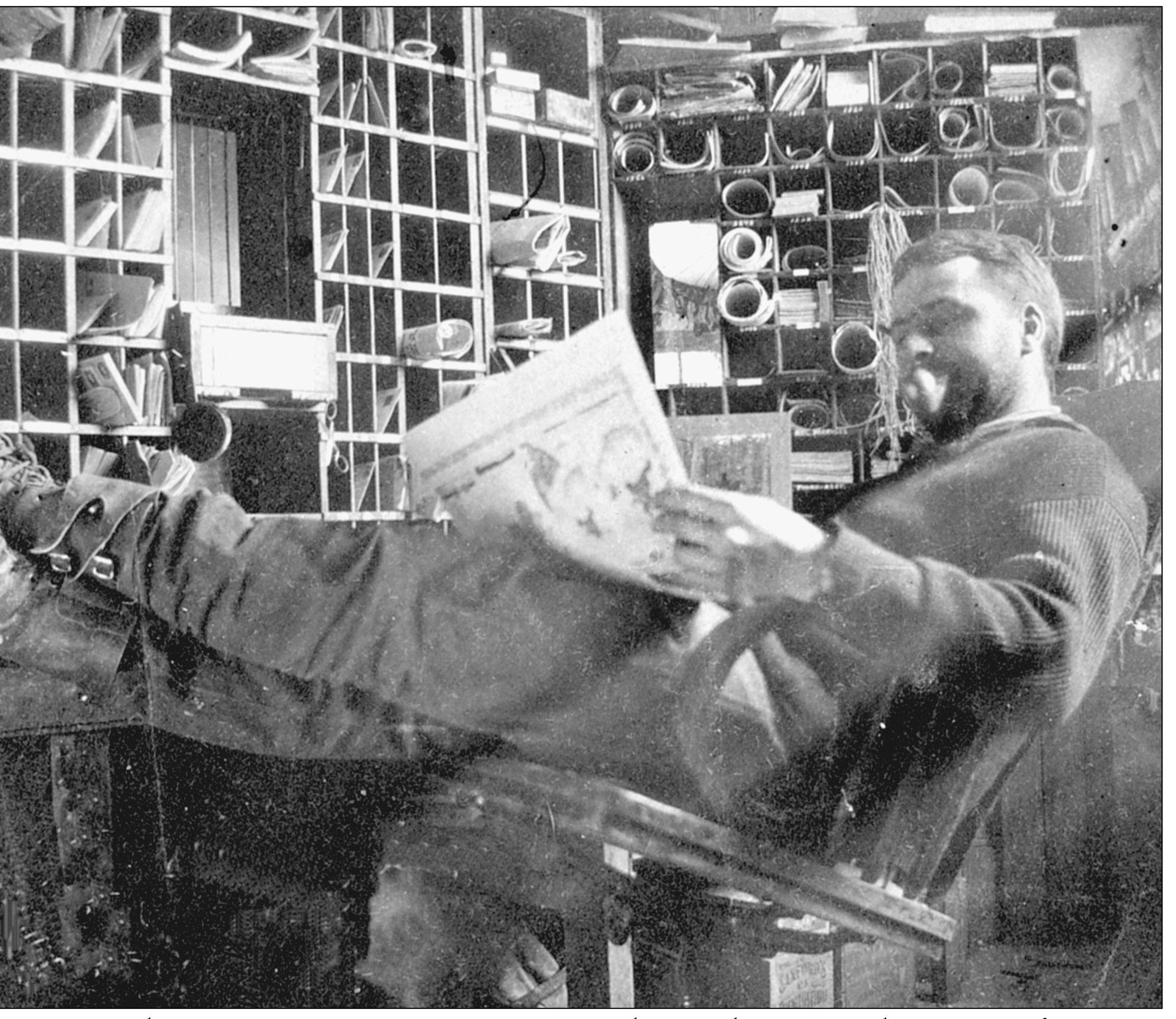
When Victor E. “Vic” Messinger came to town in the 1890s, he went to work as a manager for Ryder’s Lumber and Hardware Company. After “Teddy” Roosevelt’s election as president of the United States in 1904, Vic was appointed to the part-time position of postmaster for Glendale. In 1910, after Glendale was incorporated, he became the first town clerk. Messinger’s most lasting contribution to Glendale, however, was starting the public library. In 1897, with 400 books from his personal collection, he opened the Glendale Public Library. Located in several different places in town over the next 20 years, the library finally got its own building in the town park in 1917. In this 1905 image, Postmaster Messinger relaxes in his post office, which was located in a corner of the Ryder Building.

Vic Messinger, founder of the Glendale Public Library, came to Glendale in 1895 to become manager of the Ryder Lumber and Hardware Company. In 1897, as a public service, he opened a tiny public library in a building next to Ryder’s, with 400 books of his own. In September 1898, Ryder purchased the building at the corner of Glendale and First (Fifty-eighth Drive) Avenues and moved his business. Messinger moved his library collection to an upstairs room over the new store. Around 1900, the upstairs was rented to the Odd Fellows Lodge and Messinger moved the books to the brick schoolhouse, two blocks north of the town park (Murphy Park). At that time, this sign was hung at Ryder’s store to direct library patrons to the new location. In 1915, when the brick schoolhouse was torn down, the library moved again. In 1917, it finally ended up in a small building in the town park built around the park’s flagpole.
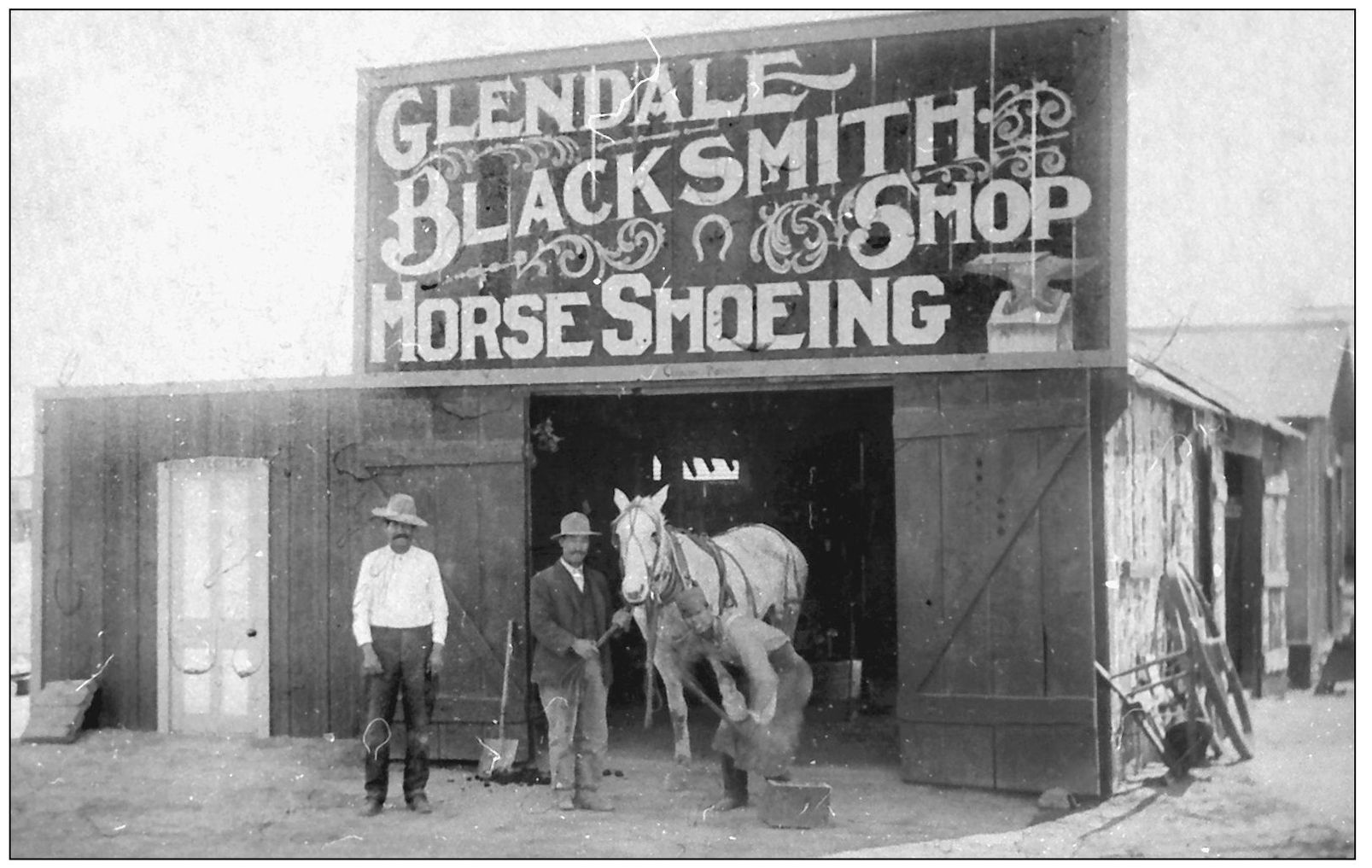
Anton Maldonado (right) is shoeing a horse in front of his blacksmith shop in Glendale, around 1904. On the other side of the shop, a wagon wheel and a one-horse plow hint at some of the other kinds of work a blacksmith was called upon to do. Maldonado’s was one of the earliest blacksmith shops in Glendale, having been established in 1903.

Anton Maldonado, hammer in hand, pauses in his blacksmith shop around 1918. Hispanics played a significant role in the development of Glendale. They worked on the Arizona Canal and on ranches and established businesses. Maldonado arrived in 1901 and set up his shop in 1903. Besides the usual work of shoeing horses, repairing broken wheels, and forging new equipment, Maldonado built buggies and caskets. He also worked on construction of the Sugar Beet Factory.

As wife of William Kuns, superintendent of Fowler Ranch, Elsie Kuns was privileged to have a horse-and-buggy at her disposal when she and her daughter Ruby wanted to go the two and a half miles to town to shop. Most folks in Glendale in 1908 got around by “shanks’ mare” (one’s own legs), but soon the automobile would change transportation forever.

George W. Sing came to town in 1904, the first of several Chinese families to settle in Glendale. Among later arrivals were the Ong and Tang families. Sing’s grocery store was located near Southwest Flour and Feed, thus a farmer could leave his wife’s shopping list at the store, go to Southwest to unload his produce, and return to Sing’s to pick up the grocery order. Sing’s continued in business under his sons’ management into the 1980s.

Three Sine Brothers’ hay wagons are lined up at Glendale’s Santa Fe depot ready to load hay into a rail car in 1905. The railroad came through Glendale in 1895 and played an important role in the area’s agricultural success. The Sine brothers had several enterprises. There was farming, supervised by “Van” Sine; the hardware store and motor supply run by “Tuck” Sine; and Holmes Sine owned Glendale’s first water system, a used furniture store, and a variety store.

A palm frond–covered vegetable shed beside the Santa Fe railroad tracks was where farmers delivered their produce in the early years. The crates in the image are full of cantaloupes. After the Glendale Ice Company plant began operating in 1912, hundreds of icebox rail cars were shipped out of Glendale every year. By 1920, that had grown to thousands of cars annually, making Glendale the busiest produce-shipping center in Arizona.